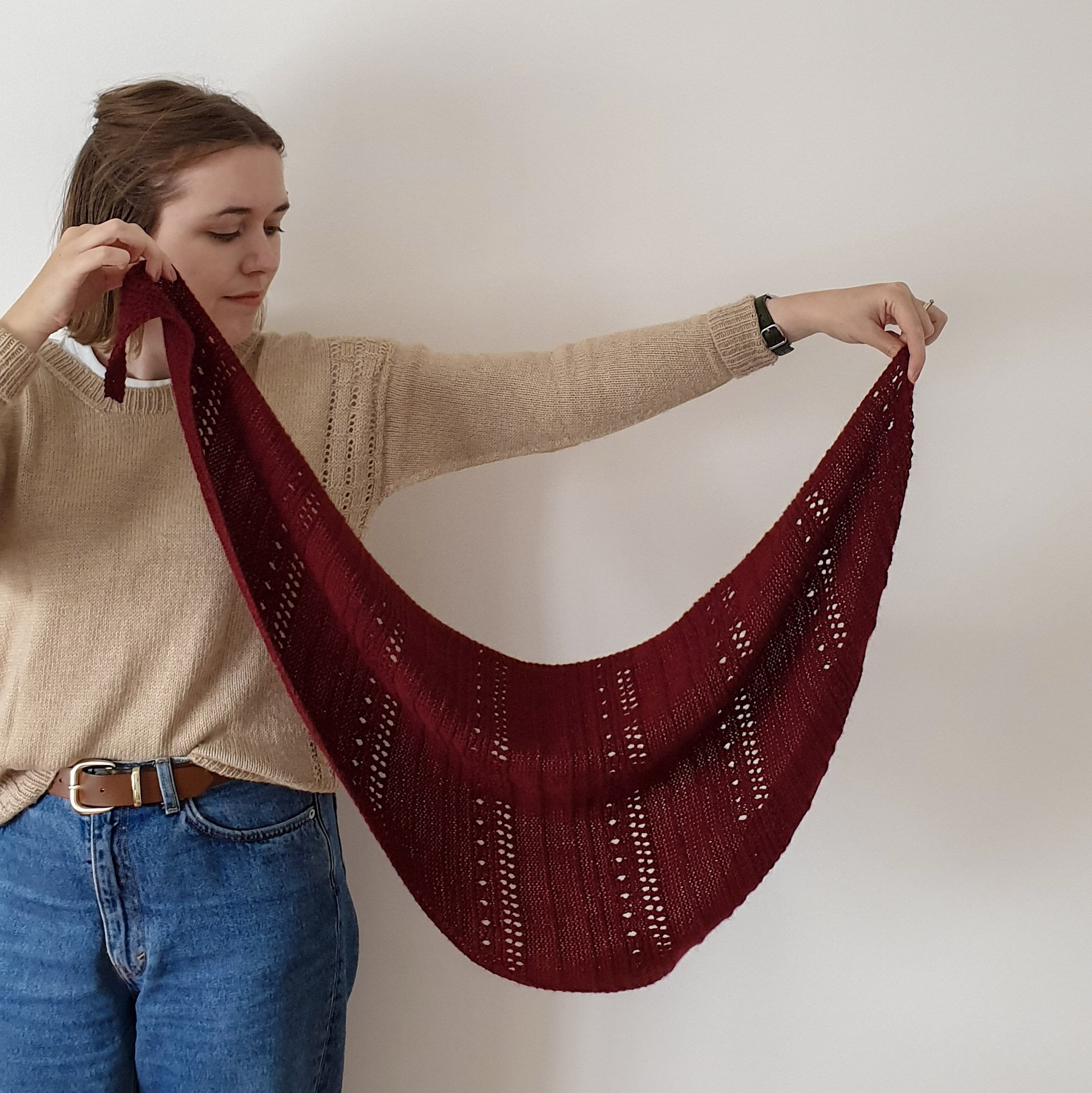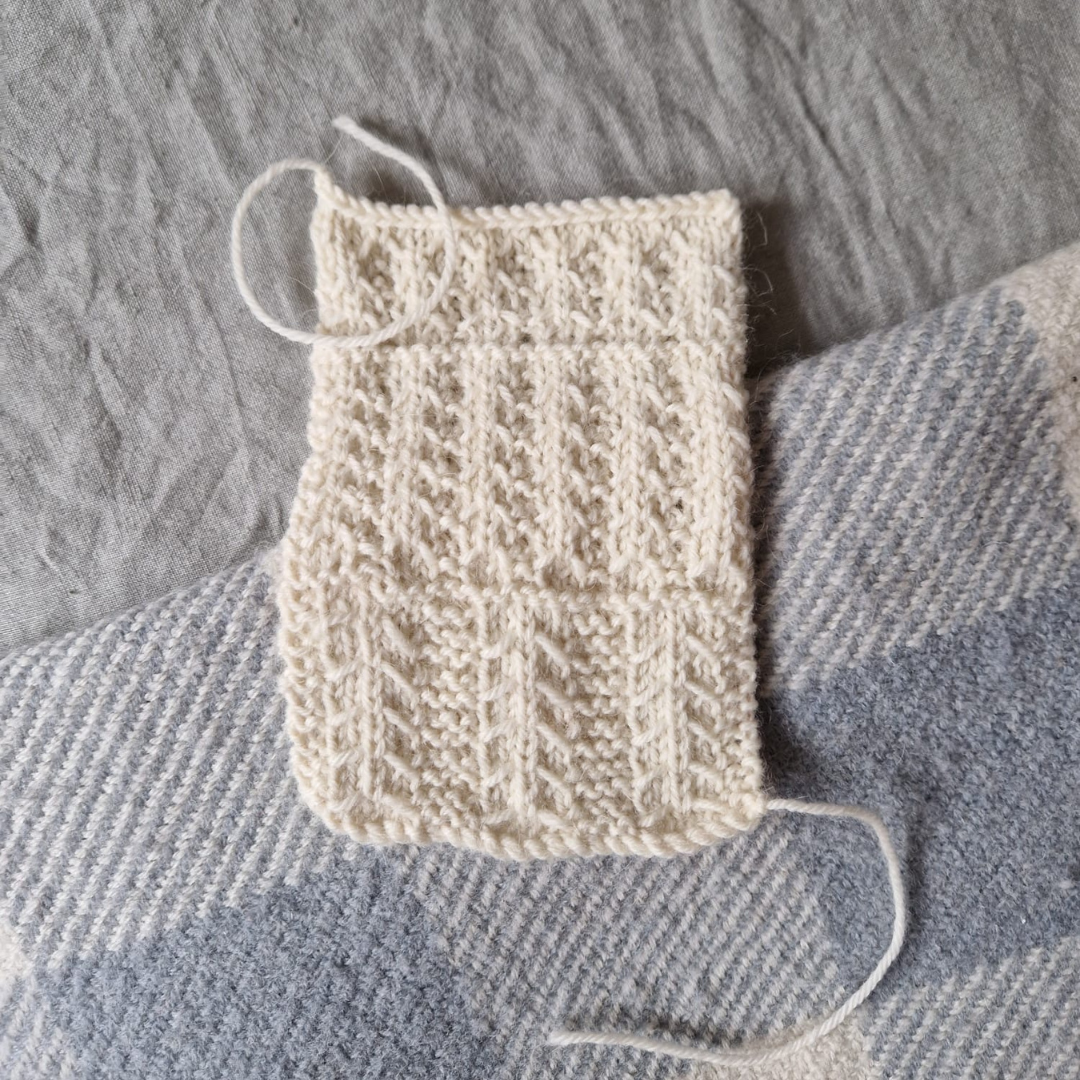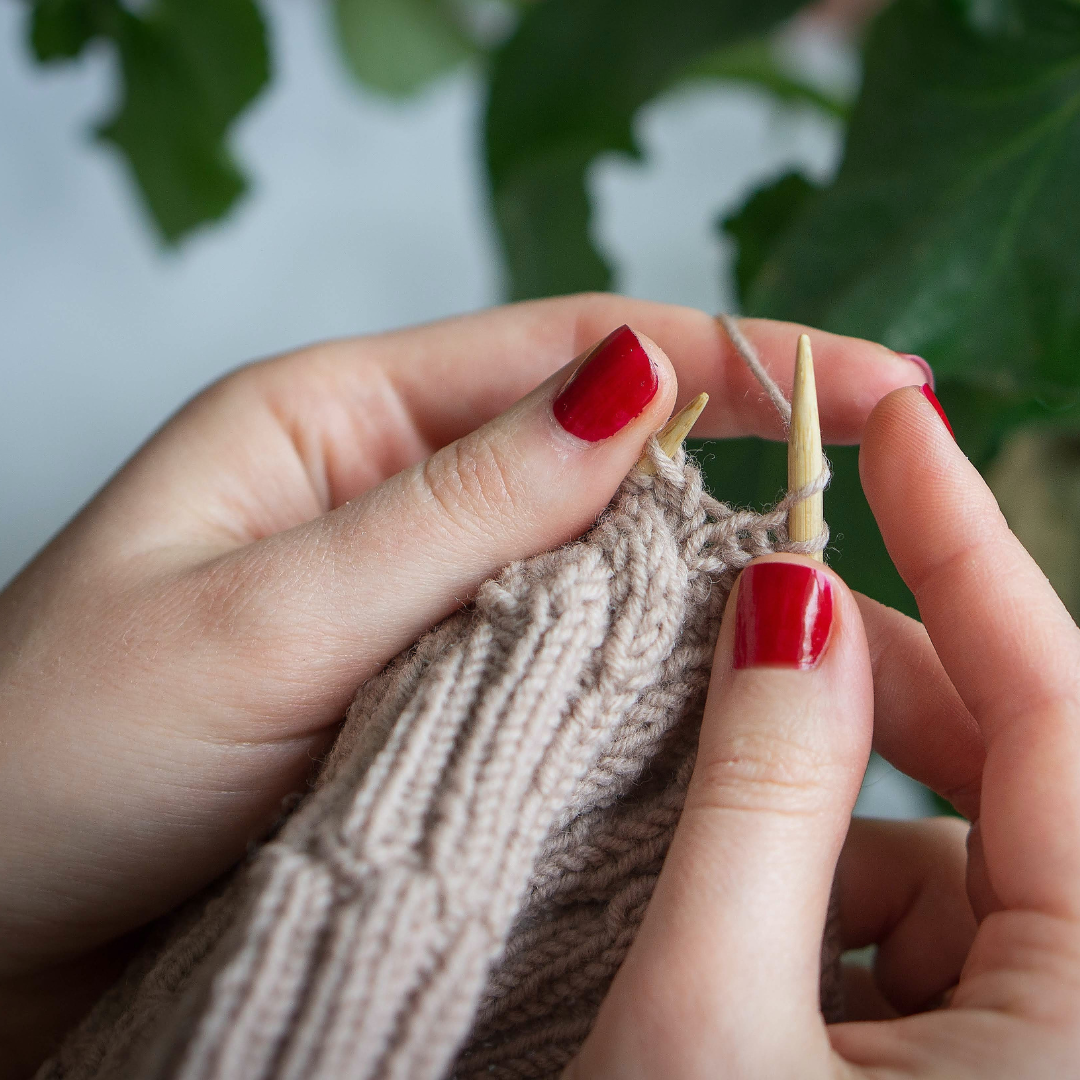Supercharge Your Design Process: Boost Productivity and Spark Creativity with the Pomodoro Technique
We all know the joy and passion that comes from designing knitting patterns. But let's be honest - amidst the demands of everyday life, it's easy to feel overwhelmed and struggle to find dedicated time for our design process.
I've been there, too.
That's why I want to share a game-changing productivity booster with you that has made a huge difference in my own design process - the Pomodoro Technique.
It's not a quick fix or a magic formula but a practical technique that gently nudges us toward greater productivity and supports our creativity along the way.
So, if you’re ready to supercharge your design process, join me as I walk you through how to use the Pomodoro Technique.
Image description: Photo of a woman in a white shirt looking at her watch with the text "Supercharge Your Design Process: Boost Productivity and Spark Creativity with the Pomodoro Technique" on top.
How Does the Pomodoro Technique Work?
Set Your Timer: Choose a timer you can easily set and see. You can use a traditional kitchen timer, a timer app on your phone, or a specialised Pomodoro app. Set the timer for the recommended work interval, typically 25 minutes, known as a Pomodoro.
Start Your Pomodoro: Once the timer starts, fully commit to your knitting pattern design task. Focus exclusively on the work at hand and avoid any distractions. Resist the temptation to multitask or switch to other unrelated tasks.
Work with Intensity: During the Pomodoro, work with intensity and purpose. Make progress on your design, whether it's sketching, creating your pattern spreadsheet, writing instructions, or any other aspect of the design process. Stay engaged and avoid getting sidetracked.
Take a Short Break: When the Pomodoro timer goes off, it's time for a well-deserved break. Set your timer for a short break of around 5 minutes. Use this time to relax, stretch, grab a drink, or engage in a non-work-related activity that helps you recharge.
Repeat: After the break, start another Pomodoro. Repeat this cycle until you complete a predetermined number of Pomodoros. Traditionally, four Pomodoros make up a set. After each set, take a longer break of 15-30 minutes to rest and rejuvenate.
Track Your Progress: Keep a record of completed Pomodoros to track your progress and stay motivated. Use a simple notebook, a Pomodoro tracking app, or a digital spreadsheet to log your completed Pomodoros and breaks. This tracking can help you identify patterns, estimate task durations more accurately, and evaluate your productivity over time.
Image description: A woman is sat on a sofa with her laptop and a notebook planning her day. The text says, Supercharge Your Design Process: Boost Productivity and Spark Creativity with the Pomodoro Technique.
From Burnout to Bliss: How the Pomodoro Technique Transformed My Design Process
In 2016, I transitioned from the fast-paced commercial knitwear industry to becoming a knitting pattern designer. However, the lack of structure and overwhelming workload left me feeling burned out and disconnected.
Desperate for a change, I discovered the Pomodoro Technique. This simple yet powerful method revolutionised my design process and restored my productivity.
Initially skeptical, I decided to give the Pomodoro Technique a try. Although I faced some challenges at first, I gradually experienced profound improvements in my productivity and stress levels.
The structured work intervals and intentional breaks made tasks feel more manageable, reignited my focus, and fueled my motivation. Most importantly, I learned to prioritise self-care and prevent burnout by incorporating regular breaks into my workflow.
While the Pomodoro Technique isn't a one-size-fits-all solution, I quickly adapted it to suit my specific needs as a knitting pattern designer. By adjusting the duration of work and break intervals, I found a rhythm that maximised my creative flow. This technique not only boosted my productivity but also emphasised the importance of taking care of my well-being in the process.
How could you benefit from the Pomodoro Technique?
The Pomodoro Technique offers numerous benefits that help your productivity and time management as a knitting pattern designer.
One of the key advantages is increased focus. By working in dedicated intervals, you can minimise distractions and fully immerse yourself in the task. The Pomodoro Technique enables you to stay engaged and maintain a high level of concentration, allowing you to make significant progress with each Pomodoro.
Another benefit is enhanced productivity. The structured approach of the Pomodoro Technique breaks down your work into manageable segments. By working in focused sprints followed by short breaks, you can maintain a consistent level of productivity throughout your work sessions.
This method helps you avoid getting overwhelmed by large or complex design projects. The Pomodoro Technique empowers you to approach your work with greater confidence and efficiency by breaking down your tasks into smaller, more manageable parts.
The Pomodoro Technique also contributes to improved time management. By setting clear work and break intervals, you gain a better understanding of how long different design phases will take. This allows you to allocate your time and plan your workflow more efficiently.
Most importantly, the Pomodoro Technique plays a vital role in preventing burnout. The built-in breaks provide important moments of rest and rejuvenation, allowing you to recharge both mentally and physically. By incorporating regular breaks, you can reduce mental fatigue, sustain your creativity, and maintain a healthy work-life balance.
Image description: A rose gold laptop, a calendar a succulent and a traditional alarm clock are all photographed on a white desk.
Troubleshooting the Pomodoro Technique
Implementing the Pomodoro Technique can come with its own challenges, but rest assured, there are practical solutions and adaptations that can help you overcome them.
Managing Interruptions
Interruptions can disrupt your focus and derail your productivity during Pomodoro work intervals. To manage interruptions effectively, give these a try:
Communicate your intentions: Let others know you'll be working in focused intervals and request their support in minimising distractions.
Use a "Do Not Disturb" sign or signal: Place a sign on your workspace or use a physical indicator (e.g., wearing headphones) to signal to others that you're in a Pomodoro work session and prefer not to be disturbed.
Plan for interruptions: If you anticipate frequent interruptions, consider shortening your work intervals slightly to allow for brief breaks to address them without derailing your progress.
Adjusting Time Intervals
The standard 25-minute work and 5-minute break intervals may not suit everyone's needs or working style. Here are some adaptations you can make:
Longer work intervals: If you find that 25 minutes is too short for specific tasks or that you need longer periods of uninterrupted focus, extend your work interval to 30 or 45 minutes.
Shorter break intervals: If 5 minutes feels too long or you prefer more frequent breaks, reduce your break interval to 3 or 4 minutes.
Experiment and find your rhythm: Finding the right balance that works for you is essential. Experiment with different time intervals and see what allows you to maintain focus while providing enough restorative breaks.
Dealing with Distractions
Distractions can quickly derail your Pomodoro work sessions. Here are some strategies you can try to minimise distractions:
Set up a dedicated workspace: Create a designated area for your knitting pattern design work that is free from distractions. This can help create a focused environment.
Turn off notifications: Silence or temporarily disable notifications on your devices to minimise distractions from emails, social media, or other apps.
Use website blockers: If certain websites or online platforms tend to distract you, consider using website blocking extensions or apps to temporarily restrict access during your work intervals.
Overcoming Procrastination
Starting a Pomodoro work session can sometimes be challenging, especially if you're feeling resistant or prone to procrastination. Here's how to overcome these obstacles:
Set a clear intention: Before starting a Pomodoro work session, remind yourself of the task at hand and the purpose behind it. Clarify your intentions and goals for the session, which can help motivate you to get started.
Break tasks into smaller chunks: If a task feels overwhelming, break it down into smaller, more manageable parts. This can make it easier to approach and reduce resistance.
Use a countdown timer: Instead of starting with a full 25-minute work interval, use a countdown timer for a shorter duration (e.g., 10 minutes) to ease into the session. Once you get going, you'll often find it easier to continue beyond the initial timeframe.
Remember, the Pomodoro Technique is adaptable, and you have the flexibility to tailor it to your unique needs. Experiment with different strategies and adaptations to overcome challenges and find what works best for you.
By addressing these obstacles head-on, you can make the most of the Pomodoro Technique and optimise your productivity as a knitting pattern designer.
Conclusion: The Pomodoro Technique for Knitting Pattern Designers
The Pomodoro Technique can be incredibly helpful for knitting pattern designers looking to boost their productivity and time management skills whilst nurturing their creativity and supporting their well-being. By implementing this technique, you can experience increased focus, enhanced productivity, improved time management, and prevent burnout.
However, it's important to remember that the Pomodoro Technique is not a one-size-fits-all solution and may require adaptation to suit your needs and working style.
The Pomodoro Technique is a powerful tool that can bring structure, focus, and balance to your creative process as a knitting pattern designer. Embrace its flexibility, adapt it to your needs, and make it an integral part of your workflow.
With practice and consistency, you'll discover the transformative impact of the Pomodoro Technique on your design process.
Have you tried using the Pomodoro Technique? If so, what impact has it had on your productivity and well-being?
If you have yet to try it, what are your thoughts on incorporating structured work intervals and intentional breaks into your workflow?
Join the discussion in the comments below and share your experiences, insights, and tips. I always love to hear from you!























